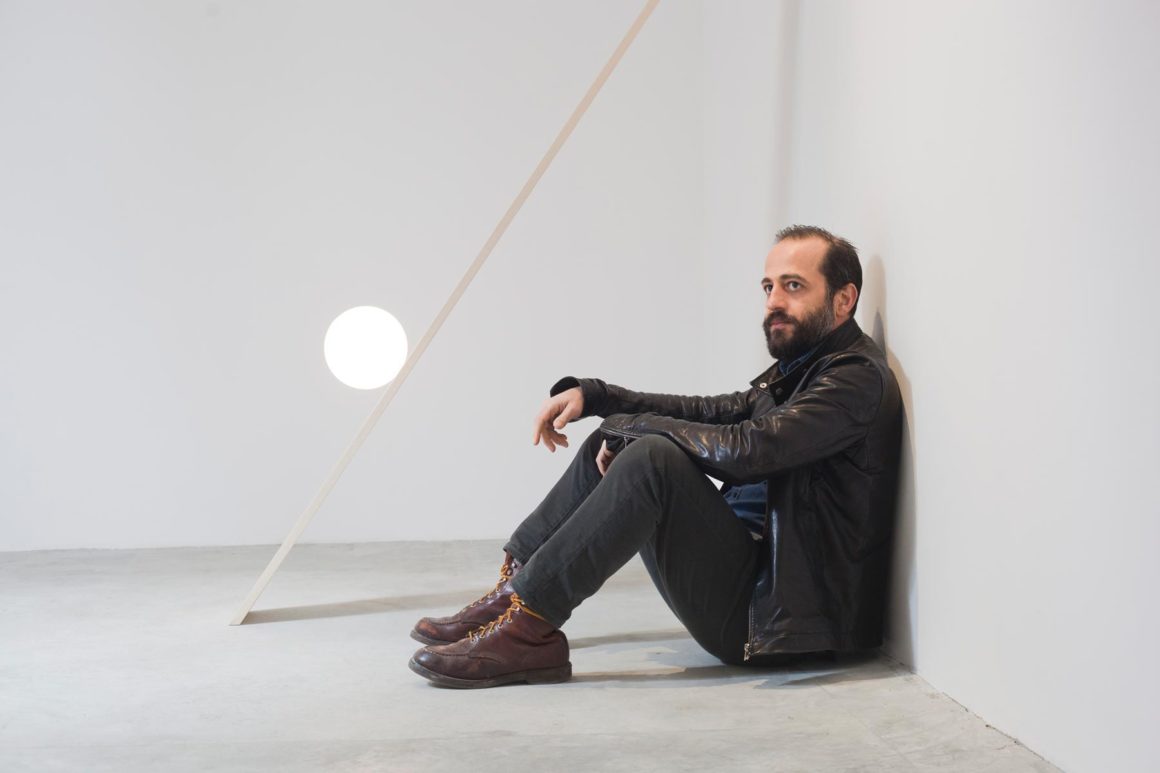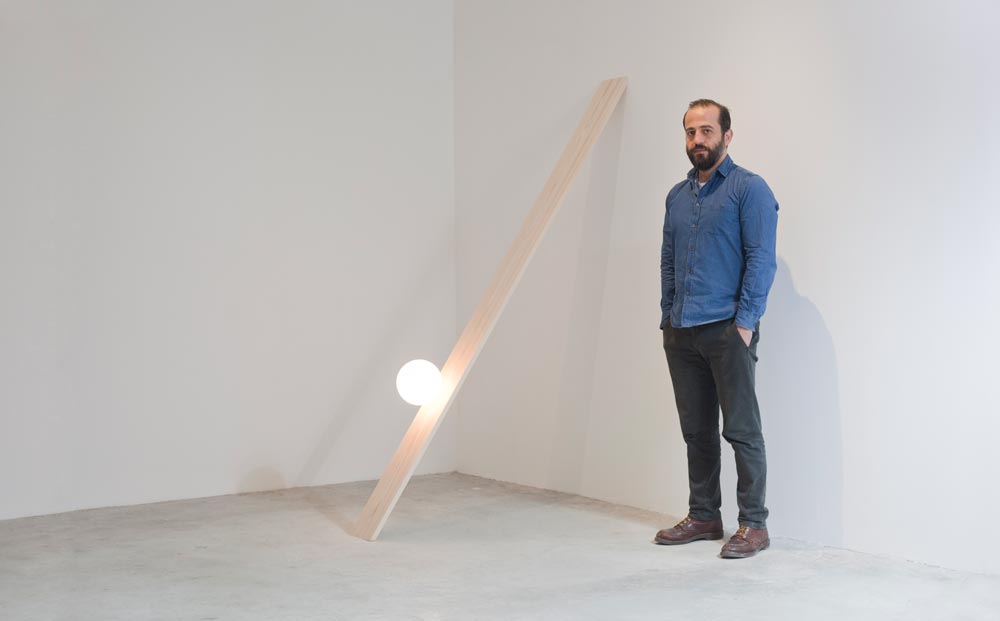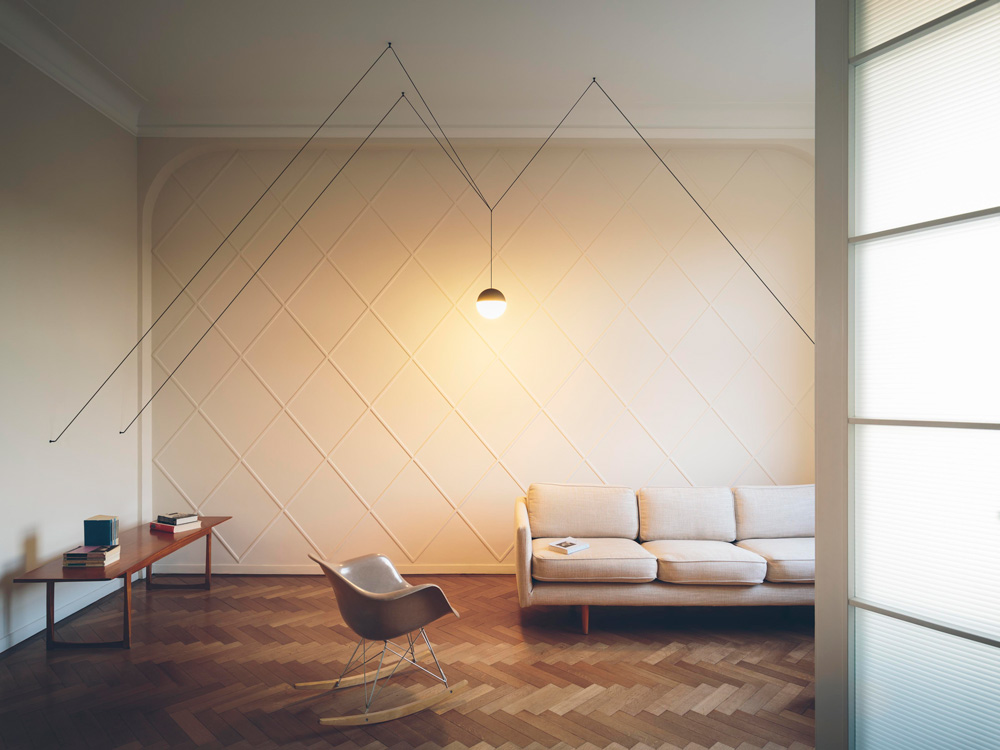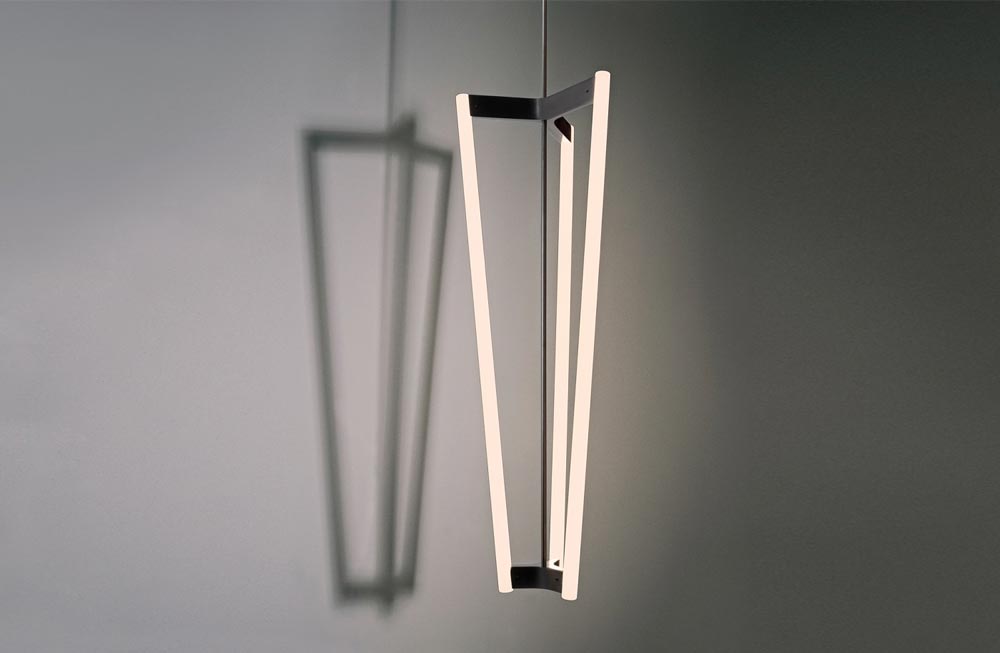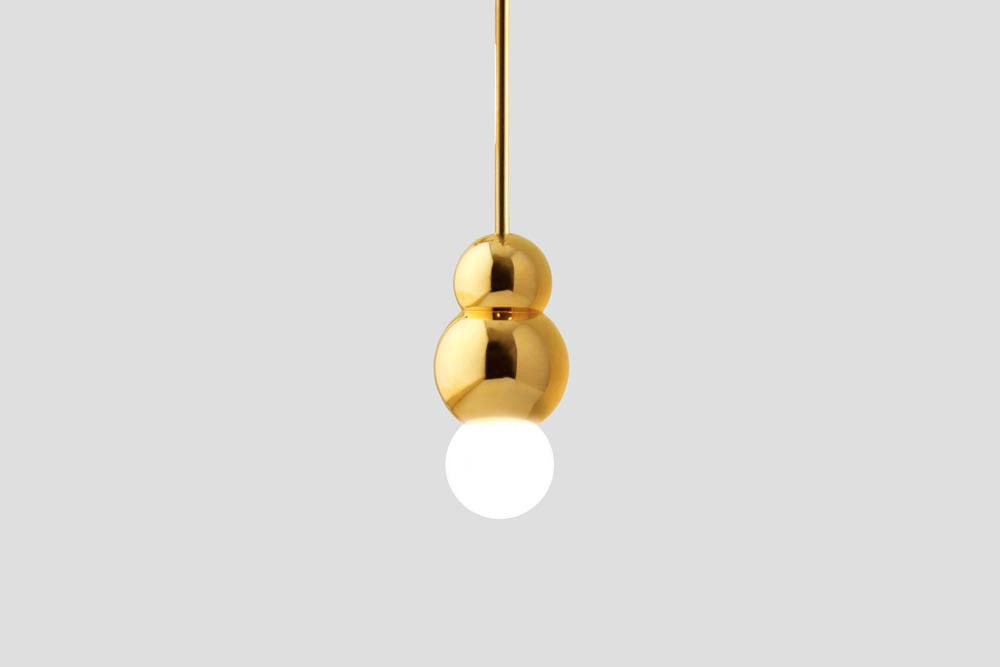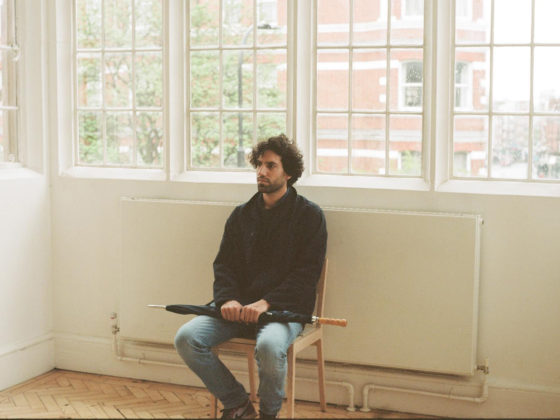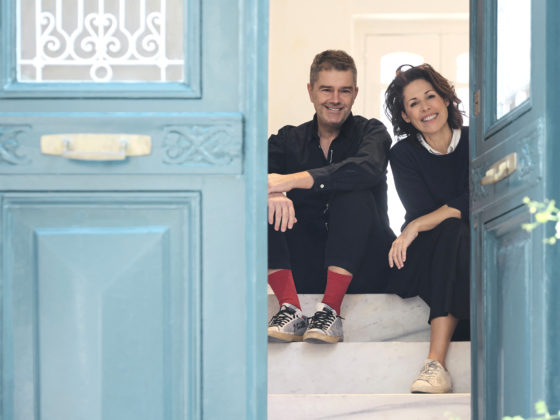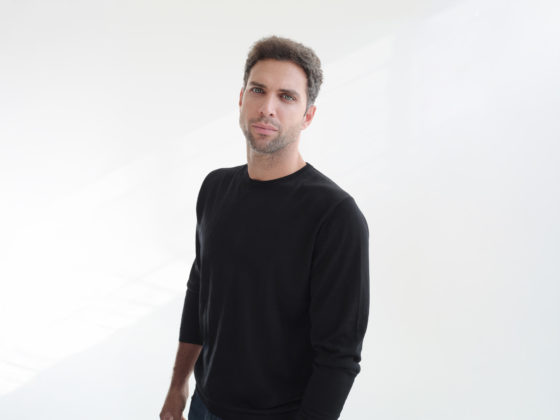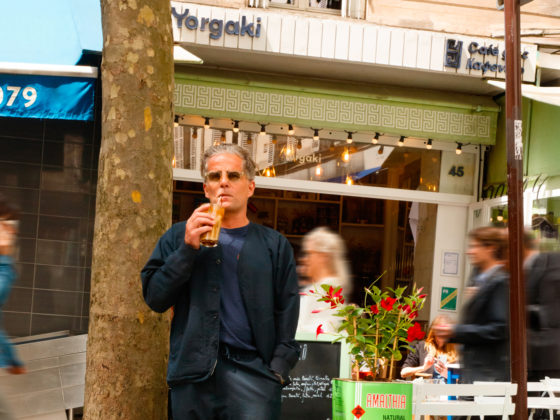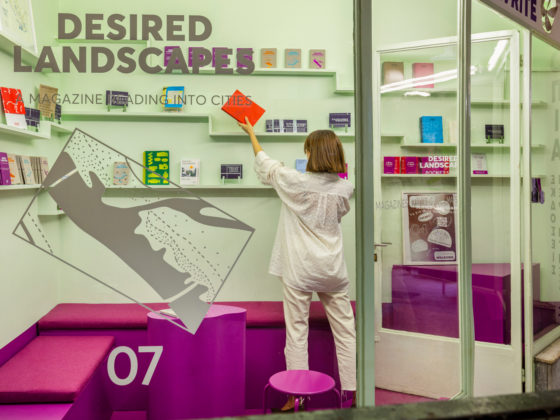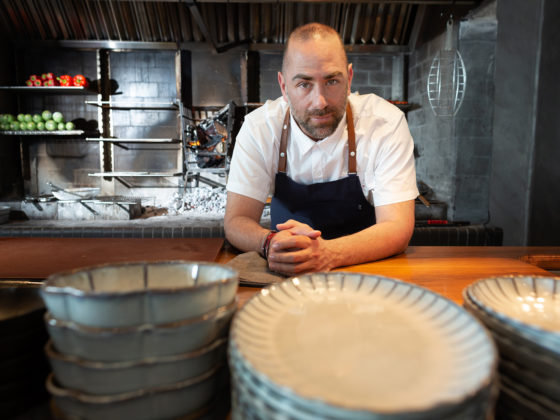London-based industrial designer Michael Anastassiades talks about his work, influences and his Greek heritage.
Michael Anastassiades launched his studio in 1994 to explore contemporary notions of culture and aesthetics through a combination of product, furniture and environmental design. Positioned between fine art and design, his work aims to provoke dialogue, participation and interaction. He creates objects that are minimal, utilitarian and almost mundane, yet full of vitality one might not expect. Anastassiades’ work is featured in permanent collections at the Museum of Modern Art in New York, the Victoria and Albert Museum, London, the Craft Council in London, the FRAC Centre in Orleans, France, and the MAK in Vienna. He has designed products with various leading manufacturers including FLOS, Lobmeyr and Svenskt Tenn. Michael Anastassiades trained as a civil engineer at London’s Imperial College of Science Technology and Medicine before taking a masters degree in industrial design at the Royal College of Art. He lives and works in London.
Photo © Stelios Kallinikou
You trained as a civil engineer at Imperial College before earning a masters degree in industrial design at the Royal College of Art. When did you realize that you wanted to become a designer? I wanted to do something creative from an early age. However, I was never really encouraged by my family to do so, both because they weren’t aware at the time of any design studies as such and because they’d rather I studied something that would give me a safer job later on e.g. finance or marketing. So I went for Civil Engineering, since it had a broad base and frame on which one could actually build on top. During my course, I discovered the nearby Royal College of Art – I was studying at Imperial College – and I was fascinated by what I saw; so many things that I could be doing rather than what I actually was. So, once I concluded my degree, I applied straight away to the Royal College, and that’s how I ended up in design.
Has your engineering background affected your work as a designer? I think that anything that you do in life affects the way that you create or generate things. I wouldn’t say that engineering did so more than anything else, though. If anything, it gave me a certain practical way of thinking, I’m very structured in the way I operate. I would say that it helped me more on the business side of things rather than the actual creative stuff.
Your work balances between fine art and design. Is it one of your goals to explore this dynamic relationship and try to dissolve its boundaries? People often describe my work as one that balances between fine art and design. I find it interesting, because I feel that they are trying to put it into a box in order to make it easier for them to understand; if it doesn’t fit into that box then it’s a problem, they don’t know where to place it, how to validate it, how to judge it. This has always been an issue for me because I don’t consider myself an artist or a designer – even though I was trained as such – but simply a creative person. My work might fluctuate from one extreme to another, but the most important for me is to be open about things. You’re creative whether you produce art or design, and I would leave the problem of labeling for others to solve. With the passage of time and the ability to establish oneself you gain a certain level of confidence and you realize that such descriptions are irrelevant to the creator himself.
What are your sources of inspiration? My sources of inspiration vary. While I some times come up with straightforward ideas, inspiration also comes from daydreaming and imagining various things. Not necessarily forms, shapes or anything like that, but rather studying the relationships that exist between people and objects. Unfortunately, inspiration nowadays has to come during travelling, as I’m constantly on a plane, moving from one place to another. But either way, the important thing is not the method, but the fact that inspiration is there. Ideas are generated by keeping your eyes open and observing the things around you, in any environment that you might find yourself in.
Do you design all the time? Not necessarily in terms of sketching or producing things, but in a subconscious way, I would say I do.
So you don’t do it based strictly on briefs? It depends on what I’m doing it for. Some companies prefer to work on a brief, while others are much more open and prefer a collaborative process that includes dialogue and an exchange of ideas. However when I design for myself I do it without any brief, and that’s one of the reasons I started my own company: to have the freedom to produce my work, without being tied into something. Overall, I would say that briefs can be interesting challenges, but they’re not at the top of my list.
Is there a designer that has influenced your work? There are many people that have influenced my work. I like different things from different people – not someone in specific – and I would say they’re mostly artists, rather than designers. In general I tend to like the way people think more than anything else, which means that I don’t necessarily like everything that they produce. To spot a creative mind is something fascinating for me, somebody being a real artist in the way that they think, whatever they might be doing. I think that’s become more of my interest, rather than having a role model or a designer that I look up to.
You design objects for spaces, so positioning could sometimes be as important as the design itself. Do you incorporate this aspect into your design process? I’m very much inspired by architecture and really interested in spatial design. As a product designer, there have been times when I’ve designed commissioned pieces for specific spaces, such as for example the chandeliers I designed for the Greek-orthodox Cathedral in Lambeth, London. However most of my designs – although inspired by space – are not necessarily created for a specific one. I would say they’re quite architectural but more generic, in the sense that each can fit into different applications and scenarios.
Can you guide the user in positioning an object in a certain way based on the way you design it? My aim is to encourage the user to engage with the object in a certain way, but that’s something I obviously can’t control through a design alone. An object is a physical presence in space that requires imagination in terms of its positioning, its a kind of art that unfortunately not everybody can practice. At the end of the day, from the time the object leaves the designer’s hands it can become anything the user wants it to become, and I’m absolutely fine with that.
Tube Chandelier
How do you choose the materials you use for each product? I work mainly with real materials such as woods, metals, and stones or even finishes that imitate them. I also like reflecting and precious materials. I’m less attracted to plastics, because for me what makes an object timeless – apart from the design and its aesthetics – is the beauty of its material. I believe that materials have inherited qualities that help them become more beautiful with time rather than decline.
To what extent do you take sustainability into account when designing an object? For me sustainability is about designing products that last. Rather than looking at ways of recycling them, my question would be ‘why do you need to throw them away in the first place?’. Besides, the chances of a plastic ending up being recycled, even if it is a recyclable plastic, are very faint – and I’m speaking purely about the operational side of things. I think that this way of recycling has not become sophisticated enough. Let’s not forget that we live with objects from ancient civilizations that are still beautiful and have a sense of real value after thousands of years. Why can’t design function in the same way? I believe the way of looking at sustainability is designing objects with materials that can actually survive time.
Which would you say are the factors that make a design timeless, apart from the materials used? I think that what makes a design timeless is proportions. The designer has to relate to the human being and create products that people don’t feel intimidated by. One also has to design above fashion, beyond trends and any kind of urgency in terms of popularity etc. To give an example, in 2004, when I started using brass and gold for my objects, people where really questioning my choice of materials. But now, 11 years down the line, those materials have become common practice. What I mean to say is that you can’t choose a material for a product just because it meets certain criteria at the time; you have to design beyond fashion and trends. I would also add that timelessness is related to the design language you use. You have to abstract an object to a level that it actually becomes so pure, that what remains in the end is only the gear itself.
Have you ever considered exploring other fields of Design? I strongly believe that there is room for everything, and I’ve worked in other fields during collaborations, but there’s only a limited amount of time that one can do so much. I’m interested in many disciplines (fashion, graphic design etc.), especially when I see talented people that share the same thinking, philosophy and approach – I think that these elements can be applied to almost everything that we do.
Do you think that your work as a whole has influences from your Greek-Cypriot heritage? I think that we are affected by all our experiences in life. The things we do and the places we’ve been all become part of our lives and we carry them with us. My mother is Greek, my father is Cypriot, I grew up in Africa and I’ve lived in London for 27 years, so I definitely carry all those sides with me. I think that if you’re Greek, no matter where you’re born or raised, you’ll always be influenced by your heritage.
Ball Light
Greece and Cyprus don’t seem to have a distinct design identity, compared to other countries such as the Scandinavic for example. Why do you think that is? Greece never had a sort of renaissance in the design industry. In other countries (e.g. Scandinavian or French) there has been a whole culture and an audience that has been growing for decades. I don’t think that Greece ever had the opportunity to do so – the past 20 or 30 years are really not enough – as it has always been too busy as a country trying to solve greater problems. For me Greek design is anything that relates to antiquity. That’s a design so incredible and fundamental that you can never beat it, no matter your design culture. In terms of contemporary design such an identity is non-existent.
Do you think that’s also got to do with accepting and embracing our cultural tradition? One has to embrace his culture in the correct way. There is a tendency in Greece to look abroad for almost everything, but I think that that’s changing. I think that what we need to do is to re-establish Greek identity in its pure form, far from gimmicks and cheap tricks. A good way do so would be by looking through our history. Our current civilization is by all means ways apart from our ancient one, but we can’t deny that it’s still a big part of us – whether embedded in our culture or simply pride, it’s there. Whatever that identity is, we definitely have to build it using a lot of references but – as I said above – not in a gimmicky way.
Most artists, designers and other creative professionals in Greece and Cyprus feel isolated from the rest of the world in terms of collaborations and communication. Why do you think that’s the case? It’s a mindset. As a culture, we have a tendency to complain about everything, and blame the rest of the world for not giving us the chance to excel. However I believe that if you want to do something- whatever that is – you have to work hard and constantly try and become better, rather than look for excuses, such as the state of the economy etc. Nothing is easy and I’ve never been through an easy situation living in the UK, either. I graduated at a time when there was a huge crisis – another financial sort of crisis – and the first thing that had to suffer was design. There were no jobs or opportunities around, and at the same time it was very hard to make a name, simply because of being a foreigner. In Britain you have to prove yourself in order to be embraced – and I think it’s good that you have to do so – rather than being celebrated from the very beginning for being e.g. exotic or foreign. Everybody should be judged by the work that they produce. If one’s work isn’t strong enough to say something, then he’s not strong enough to survive, and that applies to both Greece and abroad.
Do you follow Greek design? Not much. I think that Greek design is in a difficult spot, as it’s being absorbed by the country’s ongoing problems and issues. I personally tried to catch pace with some potential collaborations in Greece, and I found that their terms and attitude towards a designer that has a career abroad was off-putting. I don’t think that they evaluate design and that they’re interested in investing in it. But the possibility is still there for designers, wherever they might live, and if some think that it’s easier to succeed in London, by all means they should come and try it. It’s not.
You have designed products for various leading manufacturers, collaborated with prestigious architects and designers, and your work is featured in permanent collections at the Museum of Modern Art in New York, the Victoria & Albert Museum in London, and more. What is the next milestone in your career? I don’t have a program or a plan. I consider myself lucky to be given the opportunity to create things that I like, living in a creative environment. I look at every project as a challenge and as something that comes to me for a reason, so I have no other ambition in that sense. I’m happy with where I’ve been and what has been coming my way.
